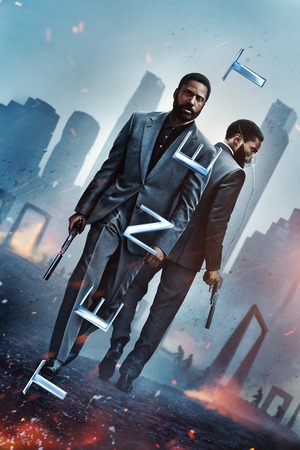
Directed by: Christopher Nolan
Starring: John David Washington, Robert Pattinson, Elizabeth Debicki, Kenneth Branagh
⏱️ Introduction: Nolan’s Temporal Labyrinth
Tenet (2020) is a science fiction conundrum, even by Christopher Nolan’s standards. Its premise: what if entropy—the direction of time’s arrow—could be inverted? The film introduces a world where cause and effect run both ways, where actions echo backward and forward in time. The Protagonist (John David Washington), a nameless spy, is drawn into a shadow war whose stakes are nothing less than the survival of reality itself.
🔁 Temporal Inversion: The Mechanics of Reversal
At the heart of Tenet is the algorithm—a device capable of inverting the entropy of people and objects. Inversion allows bullets to return to guns, broken glass to reform, and deaths to un-happen. Nolan’s trademark is to embed these mechanics in action sequences: highway chases play in both directions, characters fight versions of themselves moving backward, and entire armies stage "temporal pincer" maneuvers.
This is not time travel in the traditional sense. Instead, the film reimagines temporality as a battlefield, where strategy involves anticipating your opponent’s future as your own past. The result is disorienting but exhilarating—an invitation to see reality as a multi-directional puzzle.
💣 The Algorithm and Existential Risk
The algorithm at the film’s center is both McGuffin and metaphor: a code that, if assembled, would allow the future to annihilate the past. The villain, Sator (Kenneth Branagh), is a man dying from radiation, who will trigger the apocalypse as a final act of revenge. His nihilism is contrasted by the Protagonist’s reluctant heroism, and by Neil (Robert Pattinson), whose fate is sealed in a paradox of sacrifice.
The film explores the existential anxiety that our future descendants might judge us—and act on that judgment. The risk is not only temporal annihilation but moral failure: have we built a world worth preserving? Tenet dramatizes this anxiety, turning personal choices into cosmic ones.
🪞 Mirrors, Doubles, and Palindromes
The word “tenet” itself is a palindrome, reading the same forward and backward. This structure infects every level of the film, from plot to visuals. Characters cross paths with inverted versions of themselves, time loops overlap, and motifs recur in mirrored forms. Nolan’s obsession with duality—fate and agency, order and chaos—finds ultimate expression here.
Neil, whose relationship with the Protagonist is revealed to be both ending and beginning, embodies this palindrome: he dies so that the Protagonist can live, even as their friendship is a closed temporal loop. The film’s architecture, literally built around a center point, reflects this thematic symmetry.
🎭 Free Will in a Deterministic World
Despite the film’s puzzle-box complexity, its emotional core is surprisingly direct. The Protagonist’s journey is about taking responsibility in a world where every action seems predetermined. His final choice—to preserve Kat’s (Elizabeth Debicki) freedom, to trust Neil, to destroy the algorithm—are acts of faith in the possibility of meaning.
In a universe where fate is sealed and all outcomes are loops, Nolan still argues for agency: “What’s happened, happened.” Yet the way we act within these constraints is what gives life value. The Protagonist emerges not just as a spy, but as a founder—a force for good in a world that often feels futile.
🎯 Final Thoughts
Tenet is not an easy film, nor is it meant to be. Its relentless complexity is a challenge to viewers: to abandon linear thinking, to embrace ambiguity, and to find meaning in cycles that never truly end. In its mirrored action, recursive dialogue, and existential stakes, Nolan delivers a science fiction meditation on destiny, morality, and the very nature of time itself.